In my preparedness journey, I’m at a point where I have enough “stuff” and want to ensure that I have enough skills. As a prospective member of my county search-and-rescue (SAR) team and a budding hunter, one skill that I always wanted to learn was tracking. Sure, as a Boy Scout as a kid I learned some absolute basics, such as print identification for species of animals where I grew up, but I never got much further into it than that. While “read a book” is a valid path to prime the pump with many new skills, some things are better to learn in a class setting. So, when I saw that Fieldcraft Survival had not only added a tracking class to its inventory, but had scheduled one near me in Burnet, Texas, I jumped at the chance to get started. I signed up for Craig Caudill's Tracking Fundamentals course in the Fieldcraft Survival headquarters store in Heber City, Utah, while on the way home from a family road trip.
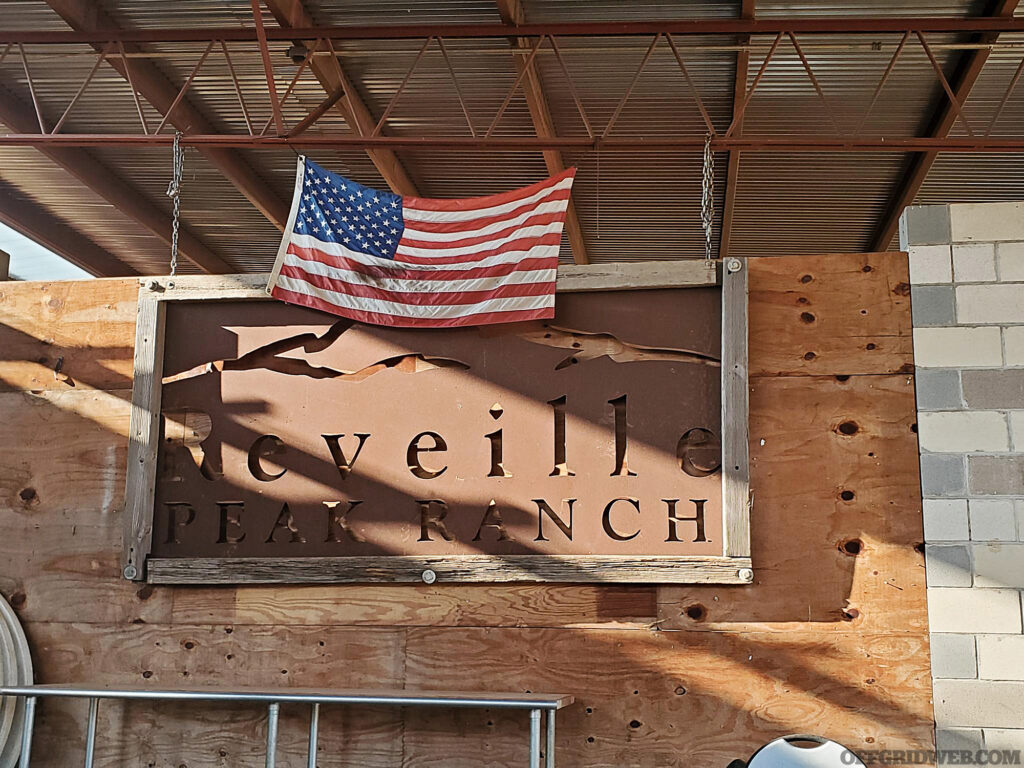
Above: The Reveille Peak Ranch has a semi-outdoor classroom area where we initially met. It was nice to see a flag up to start the day.
Fieldcraft is a well-known brand with a wide variety of classes. This was my first time taking a class from them, however, so I was interested to see if it would live up to what I’d heard. I wasn’t disappointed.
The instructor for the class was none other than Craig Caudill, founder of The Nature Reliance School, who had been tapped by FCS to provide this content. Craig has written four books on wilderness survival topics and teaches tracking, among other things, through his school directly as well. So, I loaded up my day-in-the-sticks kit and drove out to Reveille Peak Ranch to start my journey towards becoming a tracker.
Getting Started
The class size was modest — about 10 people. Some people had taken several Fieldcraft Survival classes before; for others, this was their first. A few attendees were prior military service, others have always been civilians. To start out, Craig asked what we all hoped to get out of the class in order to tailor the approach, which I appreciated.
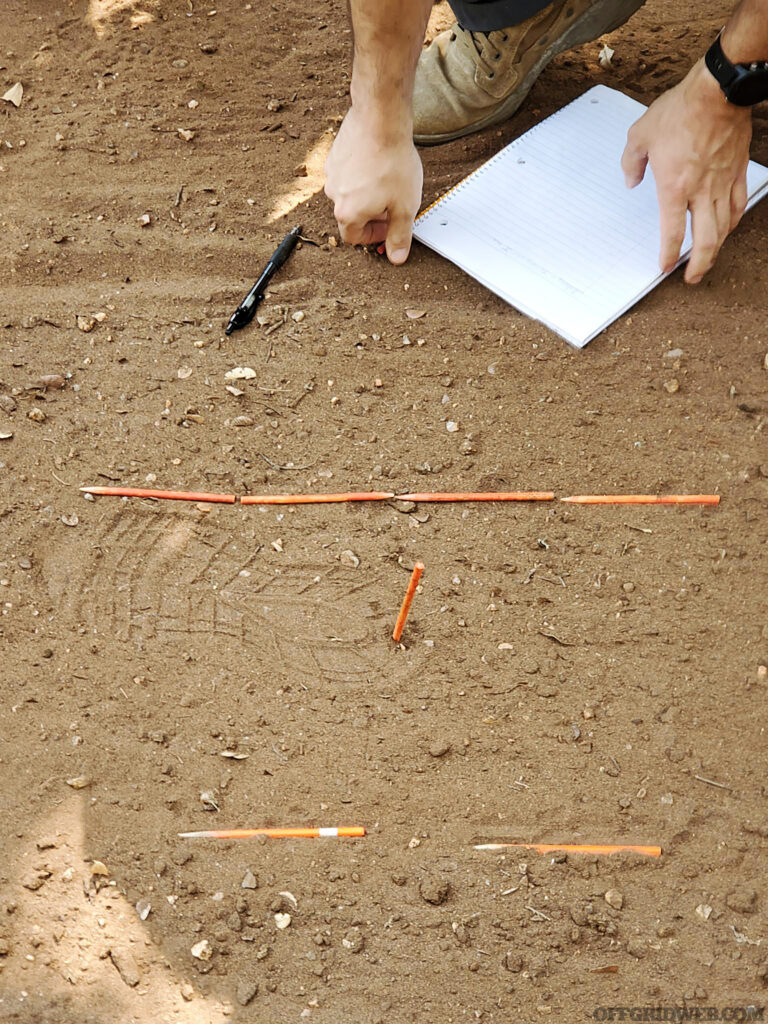
Above: The print has been identified and lines have been staked out to help determine key metrics about the track.
To be expected, a lot of people were there driven by their hunting passion. That was part of my purpose, but really tracking people to increase my skill set for SAR was my main driver. Luckily for me, much of the focus would be on man-tracking at first. This is because as people, it would be easier for us to make informed guesses about people tracks. It also doesn’t hurt that, as humans, we could create new human tracks rather than hoping to find animal tracks that may or may not be present.
Science, Not Art
Growing up, when I would think about tracking, I’d picture frontiersmen or Native Americans slinking through the forest in their buckskins, hot on the trail of game or maybe an enemy war party. Even modern media portrayals create similar depictions — Netflix’s Sheriff Longmire calling in his friend Henry Standing Bear, “the best tracker I know,” to help track down a poacher in the woods. One could be forgiven for thinking to be a great tracker you need natural talent or maybe some magic sixth sense.
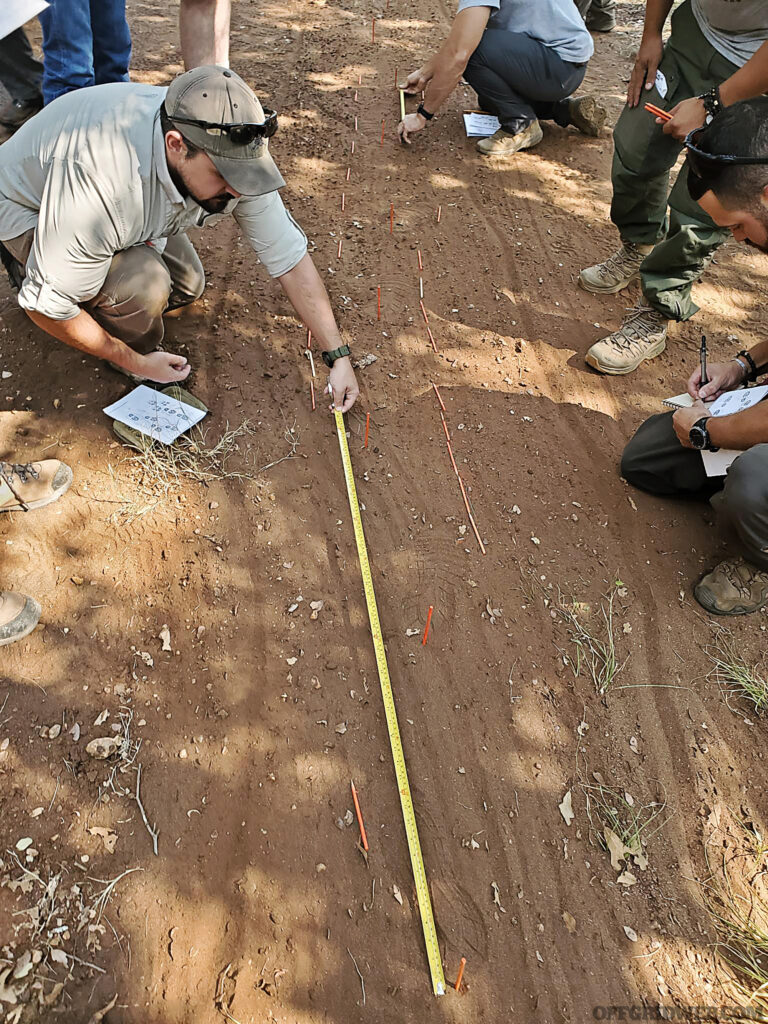
Above: Step is the distance between left and right feet. Stride is the distance from one left print to another. Stride is affected by height and changes with speed.
In fact, after introducing himself, Craig opened with a brief story of Daniel Boone, tracking a Native American war party who had kidnapped a girl, following them more than 50 miles over a course of days. It took Boone over 10 years to get all the skills and knowledge that enabled him to pull this off.
Contrary to the common perception, tracking is a science, not an art. While there’s no doubt that some people have a natural talent, just like anything else, it is in fact a skill that can be learned by anyone willing to put in the work. And like any science or technical discipline, there’s jargon. Some of the key jargon for tracking include:
- Tracks are indicators left on the ground, such as footprints.
- Sign are all other indicators, which are not necessarily on the ground.
- Spoor is a South African (Afrikaans) word for a collection of sign/tracks.
- Cutting for sign is methodically looking for sign.
- Quarry is the person or animal being pursued.
- Direction of Travel is (self-evidently) the direction the quarry is headed.
- Gait is the rate of movement of the quarry.
After receiving some printouts and dealing with a few more administrative items, we headed out to the field to get started.
Sun Track You
The first bit of wisdom that Craig gave us in the field was to keep, to the best of your ability, the sun between yourself and the track. The shadow will give the best contrast, and for this reason the morning and evening are the best times to read tracks. Midday is the worst. The point was illustrated with a flashlight to show how the tracks become more visible or wash out depending on the angle and intensity of the light.
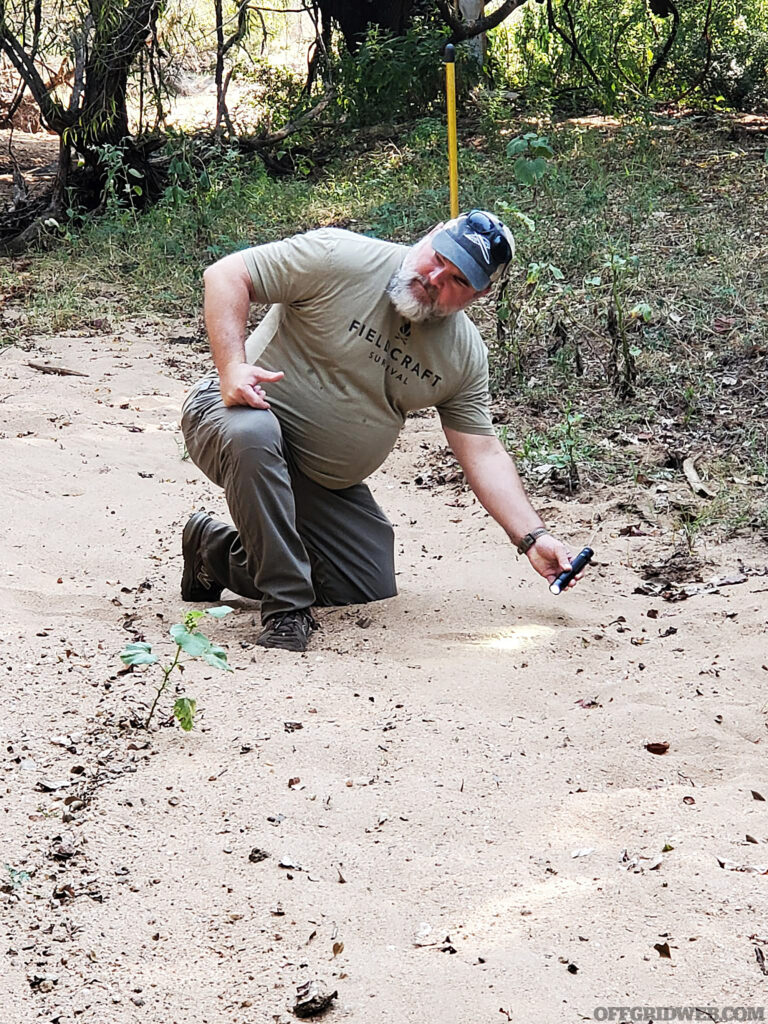
Above: Craig Caudill using a flashlight to provide contrast to a footprint in the sand.
Measure Before You Analyze
Tracking is a science of deduction — you must observe physical artifacts in order to draw a conclusion. As Craig put it in class, you must make observations before interpretations. Your goal is to learn to identify certain measurable indicators, which provide the data necessary to figure out things like:
- Number of subjects
- Direction of travel
- Speed of travel
- Time the quarry came through relative to some other events
Data needed to support these conclusions include:
- Shape of footprint(s)
- Distinct shoe treads, toe spread, etc.
- Pitch of observed footfalls relative to a center line
- Trail width
For instance, in order to deduce speed, one must know the average step and stride lengths for the type of quarry, such as a human being. By measuring step and stride, as well as the trail width, you can start to determine whether someone is walking or running. As speed increases, step and stride will increase but trail width will also decrease, as well as foot pitch.
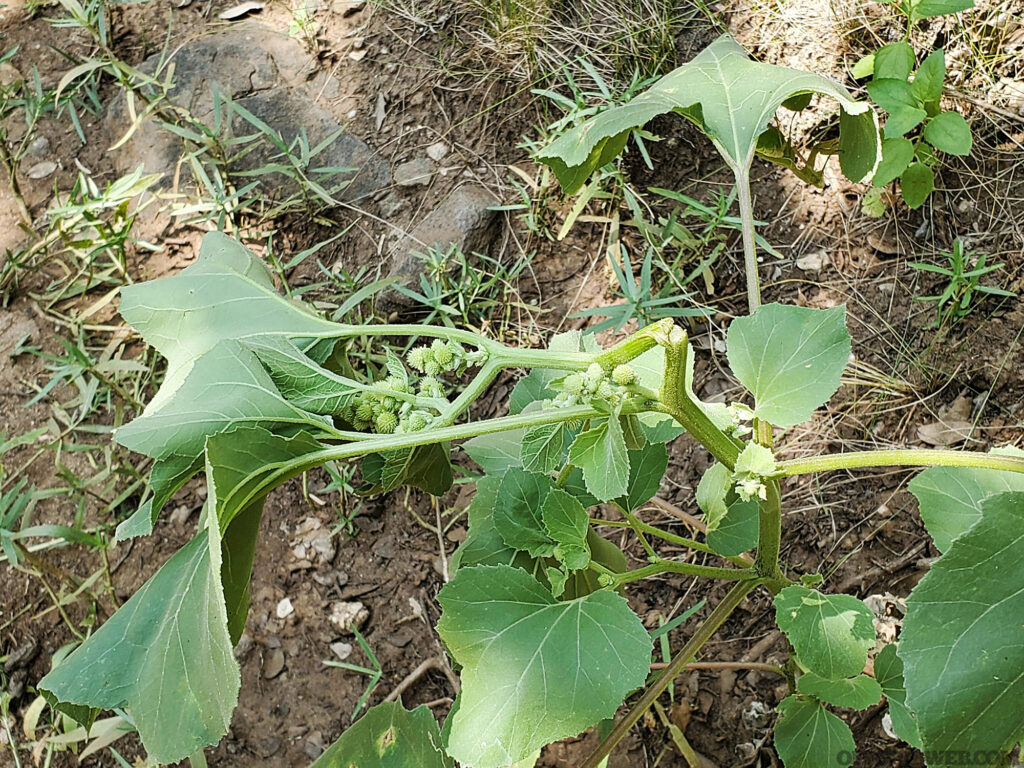
Above: Other sign include broken plants like this, or anything else that stands out as being obviously disturbed relative to the environment. Smell, color, and dryness are some of the factors that can help determine whether such sign is fresh or not.
To illustrate this, the class helped set up a “spoor pit” in the sand, and we ran several drills, involving class participation, to take measurements of tracks and then start to make interpretations. Nothing was a trick, though some things were tricky. However, the goal was to get about 70 percent right on any given scenario, with the mantra “70 percent right and move on it” drilled into us. That is to say, to the active tracker looking for, say, a fugitive, being 70 percent right and closing the time-distance gap between yourself and the subject is more important than doing a 100-percent accurate reconstruction of events that don’t necessarily matter.
Make it Human (or Not)
Depending on the terrain where you’re tracking, you may not have nice sand or mud and tracks won’t be clearly visible in the form of footprints. You’ll be looking at disturbances in leaf litter or grass, for instance, and it may not be immediately apparent what has made the trail you’re on.
Humans are the only animal fully bipedal. Being bipedal, we’re also one of the least well-balanced animals and our walk is more like a controlled fall. As such, the width of a human track is wider than that of any other animal. From dogs to hogs to members of the deer family, all animals have fairly narrow track width. Knowing that can be key to staying on a human track versus an animal.
Of course, spoor isn’t all tracks. You have to look off the ground and trees and bushes for air sign. The type of foliage needs to be taken into consideration depending on what you’re tracking. For instance, people don’t generally walk through thorny underbrush on purpose. If you see a track heading into such brush, it was likely made by an animal, not a human. If you’re starting from a last known location of someone who disappeared at night, however, he or she may not have seen the brush and just kept pushing through it.
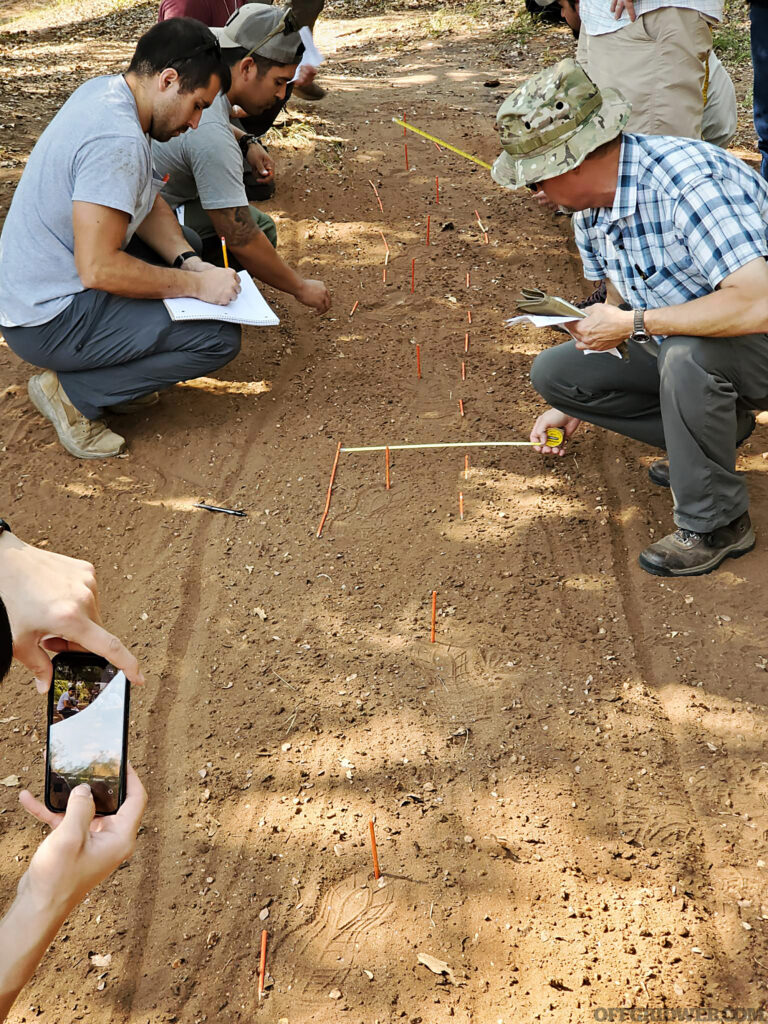
Above: Trail width can help determine whether a track is human or not when you don’t have visible prints. It can also be helpful in determining whether a subject is running or walking when you do have prints.
Practice, Practice, Practice
Like athletics or shooting, if you want to get good at tracking you have to practice. In class, we were introduced to a training technique to “take home” with us called the Ten Step Drill. It’s possible to do it by yourself, but it’s preferable to work with a partner.
To start out, one partner looks away while the other takes 10 steps out from the starting point and drops a marker at each foot fall. The tracking partner then inspects the marked footfalls and notes what sign can be seen. The partners then switch roles and repeat.
As you get better, you then move on to dropping fewer markers, then add steps. You can work in modifications to this while walking your dog, rucking, or other activities, by paying attention to your own footfalls, your dog’s, or your partner’s.
The goal is to be able to identify tracks and sign, such as the way grasses bend or break, leaves crinkle, etc., when stepped on in environments where footprints will not be clearly visible. The more you do it, the quicker you’ll be able to identify trails in the field.
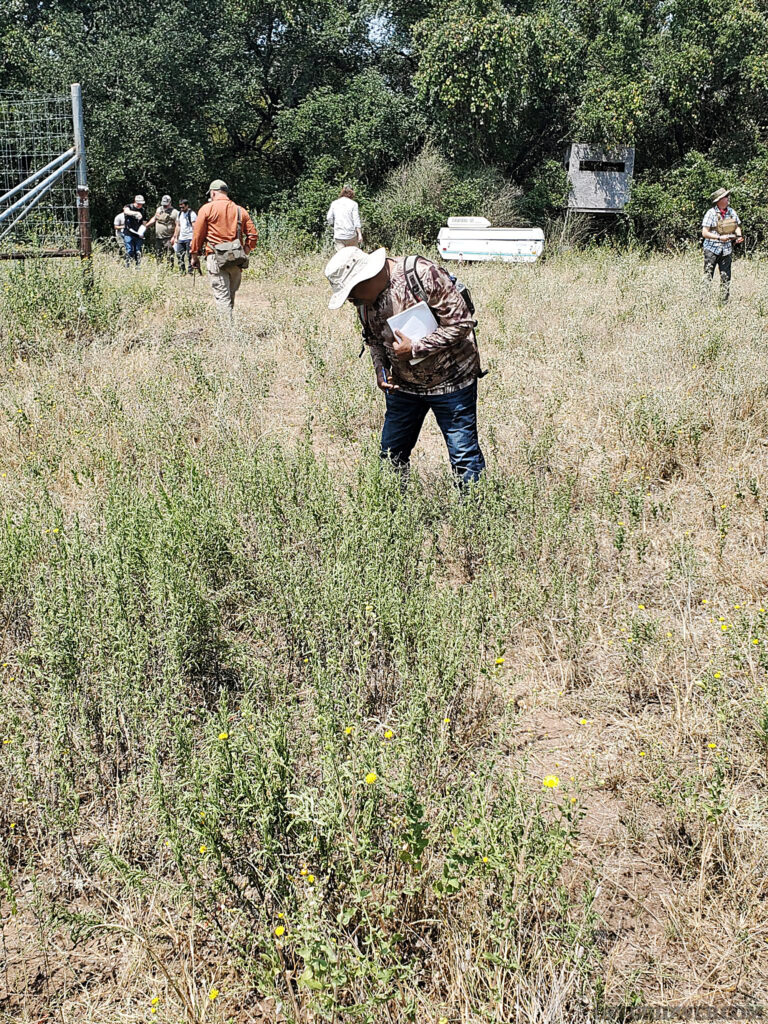
Above: In the Ten Step Drill, one partner walks out and marks his steps. The second partner takes note of what he can observe at those marked points in order to learn to identify tracks when clear footprints aren’t visible due to ground cover.
Tracking with Teams
A good portion of the day was spent running tracking drills as teams, with one group running the track and the other acting as the “rabbits.” This portion introduces unit-level tactics for man tracking specifically, but also provides the introduction for “lost spoor” tactics to reacquire a trail when the tracker loses it. While some of the tactics introduced can be done by a solo tracker, such as a hunter, many really require additional bodies to be successful.
A squad-size tracking unit may include:
- The tracker himself
- The team leader
- The comms guy
- Two flankers
- Rear security (though this was also handled by the comms guy in our scenarios)
The drills were run repeatedly, with teams changing up sides, and team members switching roles within the team each rotation. In my team’s first rotation as the tracking unit, I took the role of tracker. While I did lose the trail about halfway, this did give a good opportunity to run the reacquisition drills with the team, so I think I got more out of losing the trail than if I’d managed to stay on.
Summing it Up
Coming out of the class, I can say that I definitely feel more aware of what to look for out in the wild, or even just on my rucks near the house with my dog. I learned a lot, and frankly, I want to learn more. Tracking is an excellent addition to the skill set, whether you want to increase your chances of putting food on the table or help your community in some way. I’d definitely suggest taking one of Craig’s classes, whether through Fieldcraft Survival or his own Nature Reliance School, as a way to get started or to just get better.
Interview with Craig Caudill
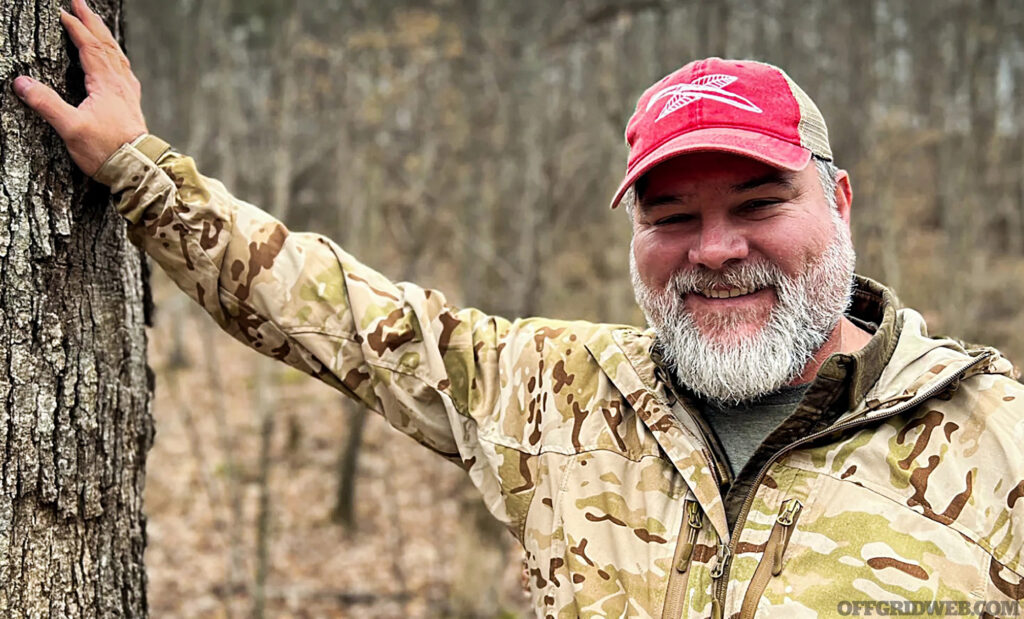
A couple days after the tracking class, I was able to connect with Craig on Zoom for an interview to get to know him a little better, and get his thoughts on topics related to the class, survival skills, and tracking in general. This interview is available exclusively on our website here.
Sources
Read More
The post One Track Mind: Craig Caudill’s Tracking Fundamentals appeared first on RECOIL OFFGRID.
By: Patrick Diedrich
Title: One Track Mind: Craig Caudill’s Tracking Fundamentals
Sourced From: www.offgridweb.com/preparation/one-track-mind-craig-caudills-tracking-fundamentals/
Published Date: Tue, 26 Sep 2023 16:52:58 +0000
------------------------
Did you miss our previous article...
https://bushcrafttips.com/bushcraft-news/so-is-olive-oil-flammable
 What is BushcraftSurvival SkillsToolsVideosBushcraft CampsBushcraft KitsBushcraft ProjectsPrivacy PolicyTerms And Conditions
What is BushcraftSurvival SkillsToolsVideosBushcraft CampsBushcraft KitsBushcraft ProjectsPrivacy PolicyTerms And Conditions
